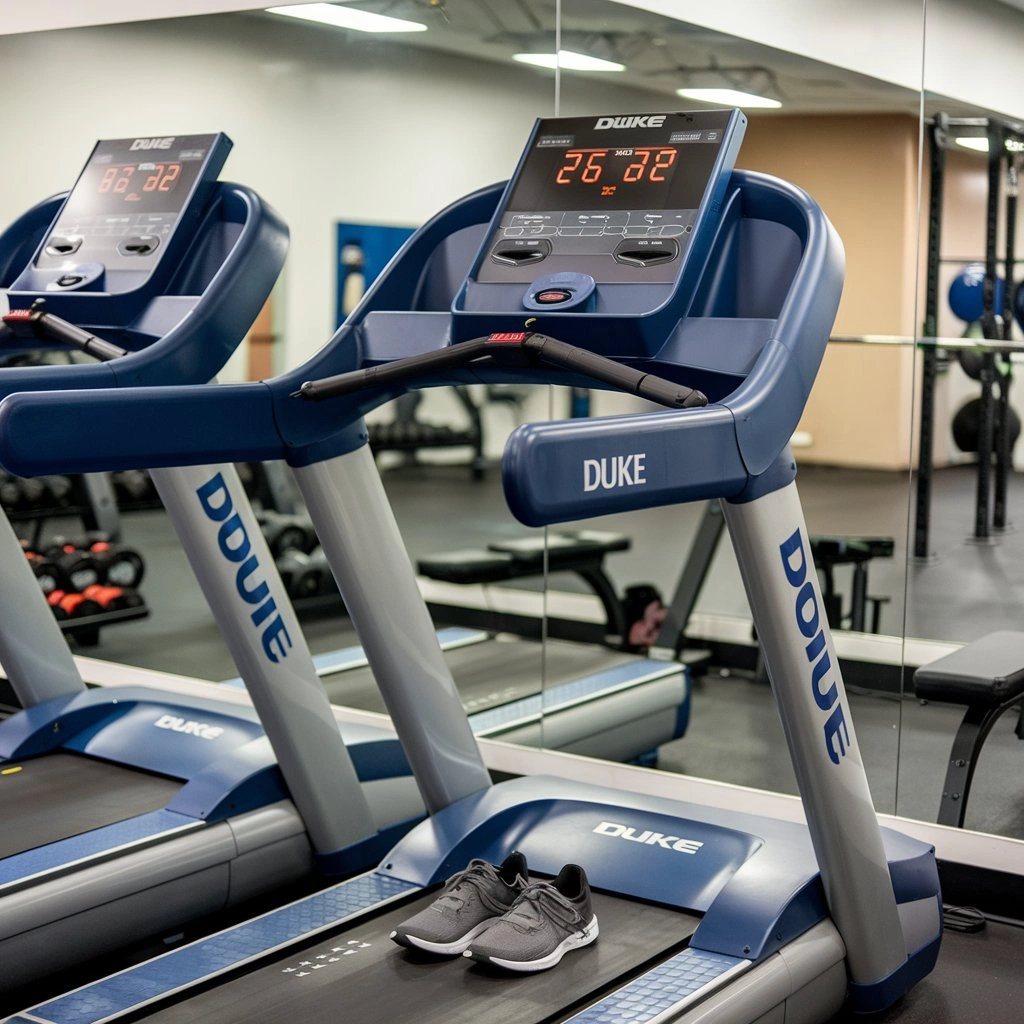Welcome to our blog post. We will discuss the Duke Treadmill Score (DTS), an important aspect of heart health. Wonder about your heart’s fitness? Concerned about cardiovascular health? You’re in the right place.
First things first, let’s talk about what the Duke Treadmill Score is all about. It’s like a report card for your heart, telling you how well it’s doing based on a special treadmill test.
Do you know how you get grades in school to see how well you’re doing in different subjects? Well, the DTS does something similar, but for your heart.
Now, why is checking your heart’s health so important? Think of your heart as the engine that keeps your body running smoothly. Just like you need to take care of a car engine to keep it working well, you need to take care of your heart too.
Checking your heart’s health early can cause problems for prompt treatment. Fix issues before they worsen.
That’s where this blog post comes in. We will explain the Duke Treadmill Score. Understanding your cardiovascular health is crucial. You can maintain a healthy heart. So, get ready to learn all about the DTS and why it matters for your health!
 Understanding the Duke Treadmill Score
Understanding the Duke Treadmill Score
Doctors check your heart’s function during exercise with the Duke Treadmill Score (DTS). Essentially, it gives a snapshot of your heart’s health while you’re exercising.
What does the DTS Measure?
The DTS measures three main things:
Exercise Capacity
This is how well your heart and lungs work together to keep you moving during exercise. It tells us how fit you are and how much physical activity you can handle.
ST Segment deviation
During exercise, your heart’s electrical activity can change. It’s like your heart’s way of telling us if there are any problems, like blocked arteries.
Presence of Angina
Angina occurs when the heart lacks oxygen-rich blood, causing chest pain. The DTS checks for angina during the treadmill test. This may signal heart issues.
Components of the DTS
Exercise Capacity
METs measure the energy used during physical activity. The higher your MET level, the better your exercise capacity.
ST Segment Deviation
Doctors compare your heart’s electrical activity during exercise to rest. Any abnormal changes could signal a problem.
Presence of Angina
The DTS evaluation records chest pain during the treadmill test. It also notes any discomfort you feel.
Calculation of the DTS
Formula and Interpretation
The DTS calculation considers your exercise capacity, ST-segment deviation, and angina presence. Your DTS score reflects various cardiovascular risk levels, ranging from low to high.
Scoring System
Healthcare professionals view a DTS score of +5 or higher as low risk. They consider +4 to 0 as moderate risk and -11 or lower as high risk. Your doctor will interpret your DTS score and discuss what it means for your heart health.
Clinical Significance
Understanding the Duke Treadmill Score (DTS) is crucial for evaluating cardiovascular health. It helps predict future risks.
Prediction of Cardiovascular Risk
The DTS predicts your risk of heart attacks and strokes. The DTS helps doctors identify individuals at higher risk for cardiovascular events. It assesses exercise capacity, ST-segment deviation, and the presence of angina.
A higher DTS score typically indicates a lower risk, while a lower score suggests a higher risk. Healthcare providers use this information to customize preventive strategies. It helps reduce the risk of future cardiovascular events.
Prognostic Value in Various Populations
Research shows that the DTS predicts outcomes for various groups. It includes people with or without heart issues. A lower DTS score is linked to a higher risk of heart issues. This includes heart attacks, failure, and death.
The DTS guides treatment decisions and risk stratification in patients. It is useful for those undergoing cardiac rehabilitation or considering invasive procedures.
 Comparison to Other Risk Assessment Tools
Comparison to Other Risk Assessment Tools
The DTS is useful for cardiovascular risk assessment. Compare its performance to other tools for a complete evaluation. Framingham, Reynolds, and SCORE risk scores provide extra information about cardiovascular disease risk. They show risks over a set time.
Healthcare providers can use the DTS tool to assess a patient’s cardiovascular risk. It also aids in making informed decisions about preventive measures and treatment strategies.
Indications for Use
Patients Suitable for DTS Evaluation
Doctors typically recommend the DTS for individuals at risk of heart disease. Symptoms include chest pain, shortness of breath, and other cardiovascular signs. It is commonly used in patients with suspected or known coronary artery disease.
It is also used in those who have had treatments like coronary angioplasty or bypass surgery. People with high blood pressure or diabetes may enjoy DTS evaluation. It helps assess their heart disease risk and guide preventive measures.
Clinical Scenarios Where DTS is Beneficial
The DTS can offer valuable information for patient management in various clinical scenarios. During exercise, chest pain or other symptoms signal a potential heart issue.
A DTS evaluation can assess heart disease risk. It can also guide further testing or treatment. Monitoring DTS changes can assess treatment response in people with heart disease. It can identify the disease progression. It guides lifestyle and medication decisions.
The DTS helps in risk stratification before cardiac procedures. It assists in deciding on CABG or evaluating perioperative risk.
Limitations and Considerations
The DTS helps assess cardiovascular risk, but has limitations. Recognize and consider these. Factors like age, sex, fitness level, and medication can affect DTS accuracy.
Certain medical conditions or medications may affect DTS results, leading to inaccurate outcomes.
The DTS is one part of assessing heart health. Use it with other tests for a full evaluation.
The DTS may not be suitable for everyone. Individualized evaluation is necessary to determine its appropriateness for each patient.
Performing the Duke Treadmill Test
Perform the Duke Treadmill Test with careful preparation. Follow a specific procedure and ensure safety precautions.
Preparation and Setup
Before conducting the Duke Treadmill Test, several preparations are necessary.
Firstly, the patient should wear comfortable clothing and appropriate footwear suitable for exercise. Gather essential equipment: a treadmill, ECG electrodes, and a blood pressure track.
Include emergency medical supplies. The testing area must be well-lit. Ventilate and clear obstacles for patient safety and comfort during the test.
Healthcare providers review the patient’s medical history, current medications, and exercise testing contraindications. This ensures the test’s safety and appropriateness.
Procedure and Protocol
The Duke Treadmill Test assesses cardiovascular fitness and detects abnormalities during exercise. The patient walks on the treadmill slowly. The speed and incline increase based on age, fitness, and medical condition.
Healthcare providers check the patient’s heart rate, blood pressure, ECG, and symptoms. They observe chest pain, shortness of breath, and fatigue.
The test continues until the patient reaches their most exertion. It also stops if they experience symptoms. Specific goals, such as hitting a target heart rate or finishing an exercise, end when reached.
Medical staff check the patient after the test. This ensures a safe recovery during the cool-down period.
Safety Precautions
Safety is crucial during the Duke Treadmill Test to prevent injuries. It also ensures accurate results.
Healthcare providers must closely supervise the patient during the test. They should be ready to intervene for any adverse reactions or emergencies. Handrails, emergency stop buttons, and safety straps prevent falls on treadmills.
Check the patient’s vital signs and symptoms. Stop the test if safety or medical concerns arise. Healthcare providers should undergo training in basic life support and emergency procedures. This helps them respond effectively to any test complications.
Interpreting the Results
Understanding a patient’s cardiovascular health requires interpreting the Duke Treadmill Score (DTS). This helps guide appropriate management strategies.
 Understanding DTS Categories
Understanding DTS Categories
The DTS categorizes patients into risk groups by score. Healthcare providers use this to assess cardiovascular risk and plan interventions. These categories typically include:
Patients with low-risk DTS are less likely to have future heart issues. They may have a high exercise capacity. They show minimal ST-segment deviation and no angina symptoms during the treadmill test.
Low-risk individuals may need regular monitoring and lifestyle changes to maintain heart health. They might not need aggressive medical interventions.
Patients with a moderate-risk DTS may show abnormalities during the treadmill test. These abnormalities include reduced exercise capacity, mild ST-segment deviation, or occasional angina symptoms.
Moderate-risk individuals may enjoy closer monitoring. They might need more tests and lifestyle changes to lower their risk of heart issues. This could include exercise, diet adjustments, or medication.
Patients with a high-risk DTS face greater chances of heart attacks or strokes. During the treadmill test, they may show significant abnormalities. These could include severely reduced exercise capacity. The abnormalities may also include marked ST-segment deviation or frequent angina symptoms.
High-risk individuals need quick medical help. They may need cardiac rehab. They might need procedures like angiography to lower risks and improve results.
Implications for Patient Management
The DTS results interpretation is crucial for managing patients and making treatment decisions. Healthcare providers use the patient’s risk category to create personalized management plans. This helps address specific cardiovascular needs and lower the risk of future events.
Lifestyle changes like exercise and diet are part of the treatment. Medications for cholesterol and blood pressure are also included. Stress management and quitting smoking also play a role.
Antiplatelet therapy is another important intervention. High-risk patients may need close monitoring. They may need a referral to specialized cardiac care. They may need more aggressive interventions to improve outcomes and quality of life.
Case Studies or Examples
Clinics show how they use the Duke Treadmill Score (DTS) through real-life cases. The results of DTS influence decision-making.
Real Life Scenarios Demonstrating the DTS Application
Let’s examine a few real-life scenarios to see how people use the DTS.
John, a 55-year-old man, visits his doctor due to chest pain during exercise. His doctor recommends a Duke Treadmill Test to assess his heart health.
During the test, John has chest pain and shows ST-segment deviation on the ECG. His DTS score indicates a high risk of cardiovascular events. John’s doctor started intensive treatment with cholesterol-lowering drugs and lifestyle changes.
John undergoes evaluation and discovers coronary artery disease. He needs angioplasty and stenting. The DTS detects John’s condition early. John receives timely intervention. This reduces his heart attack risk and improves his quality of life.
Sarah, a 45-year-old woman with a family history of heart disease, has a routine check-up with her doctor. Her doctor recommends a Duke Treadmill Test to test her heart risk. Sarah passes the test without angina symptoms. She demonstrates high exercise capacity.
Her DTS score falls into the low-risk category, indicating a favorable prognosis. Sarah’s doctor stresses maintaining a healthy lifestyle for her heart. This includes regular exercise, a balanced diet, and quitting smoking.
The DTS reassured Sarah. She feels empowered to control her cardiovascular risk factors and focus on her well-being.
Interpretation of Results and Decision Making Process
The interpretation of the DTS results is crucial in guiding clinical decisions.
John’s doctor starts aggressive treatment for his high-risk DTS score. The treatment manages his coronary artery disease and reduces cardiovascular risks. It includes medication and procedures.
Sarah’s low-risk DTS score reassures her and her doctor. It indicates a favorable prognosis and emphasizes lifestyle changes for heart health.
The case studies prove how the DTS helps healthcare providers assess cardiovascular risk. It also helps customize treatment plans and enhance patient results.
Advantages and Limitations
Understanding the Duke Treadmill Score (DTS) is essential in clinical practice.
Benefits of Using the DTS
- The DTS is a non-invasive assessment for cardiovascular health. It does not use radiation or contrast agents, ensuring patient safety.
- The DTS categorizes patients by risk for personalized cardiovascular management.
- The DTS provides valuable prognostic information. It helps predict cardiovascular events and guides preventive measures to reduce risk.
- The DTS is more cost-effective and accessible than invasive tests like coronary angiography. It is a valuable risk assessment tool in various clinical settings.
 Potential Drawbacks or Challenges
Potential Drawbacks or Challenges
Despite its benefits, the Duke Treadmill Score also has some limitations:
- The DTS’s accuracy depends on the patient’s ability to perform the treadmill test well. Fatigue, motivation, and physical fitness affect test results and DTS interpretation.
- The DTS, like any test, can produce false positive or negative results. Medication, baseline ECG issues, or poor exercise can lead to errors in DTS analysis.
- The DTS helps with risk stratification but may miss some heart diseases. An accurate diagnosis of microvascular dysfunction may require extra tests. More tests may also be necessary for non-obstructive coronary artery disease.
- Healthcare providers interpret DTS results differently. This leads to variations in risk assessment and treatment decisions.
The Duke Treadmill Score is valuable for assessing cardiovascular risk. Healthcare providers should use clinical judgment and other tests.
Future Directions and Research
Studying the Duke Treadmill Score (DTS) reveals new cardiovascular risk assessment technologies. This exploration also uncovers ongoing research developments.
Ongoing Studies and Developments Related to the DTS
Researchers are studying the DTS in different clinical settings and patient groups. They are looking into ways to enhance its accuracy and predictive value. Ongoing studies focus on:
Validation studies improve the DTS to boost its accuracy for various patient groups. Women, elderly individuals, and people with conditions like diabetes or chronic kidney disease.
Researchers explore new biomarkers: high-sensitivity troponins, natriuretic peptides, and inflammatory markers. This aims to improve risk stratification and prognostic accuracy with the DTS.
Digital health technologies improve exercise testing for remote or underserved populations. This includes wearable devices and telemedicine platforms.
Emerging Technologies or Methodologies in Cardiovascular Risk Assessment
Researchers are exploring new technologies to enhance cardiovascular risk assessment.
AI and machine learning algorithms analyze large datasets. They identify novel patterns and risk factors for cardiovascular disease. This leads to more accurate risk prediction models and personalized treatment strategies.
Genetic markers enhance heart disease risk assessment for those with a family history.
Cardiac imaging modalities such as CT angiography, MRI, and PET test heart health. They also help with treatment decisions and enhance risk assessment.
Precision medicine tailors treatments to individual patient characteristics, genetic predispositions, and disease mechanisms. This optimizes outcomes and minimizes adverse events.
Researchers aim to revolutionize cardiovascular risk assessment and management. This will improve patient outcomes and reduce the burden of cardiovascular disease worldwide.
Conclusion
The Duke Treadmill Score (DTS) is important for assessing heart health. It helps determine heart disease risk and guides treatment.
We explored the DTS components, clinical importance, and procedure in this blog post. We’ve explored real-life scenarios showing how it works. We’ve discussed its pros, cons, and new technologies in heart risk assessment.
Incorporating the DTS into clinical practice is crucial. It provides valuable prognostic information and helps tailor personalized treatment plans.
Familiarizing yourself with the DTS enhances risk stratification. Integrating it improves treatment decisions and patient outcomes. Healthcare providers must recognize the importance of cardiovascular assessments. They should work with patients to promote heart-healthy behaviors.
We can work together to prevent heart disease. This will improve patients’ health and create a healthier future.

